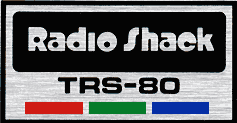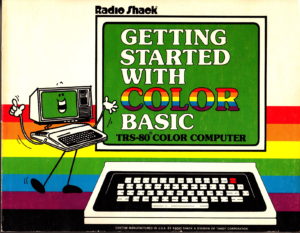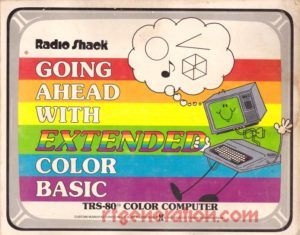In the late 1970’s and early 1980’s, Video games in the arcade, home systems, and ultimately personal computers were a new and exciting thing. This new wave of technology and entertainment totally captured my imagination and interest, and I, like millions of American kids had video game fever. We had an early home video game that was a form of the “Pong” game, with two paddles that allowed you to play video tennis and bounce a large block pixel back and forth.
I spent countless quarters in the arcade, was jealous of my friends who had an Atari 2600 home video game system, and longed to be part of this revolution. I hung out at my local Radio Shack store, and was familiar with the original TRS-80 computer, a black and white system at the time, and in 1980, the TRS-80 Color Computer entered the scene, and a home computer, that could play video games was within the grasp of those who could afford it.

In 1981, at the age of 14, I began working at a local grocery store, for minimum wage, earning $3.35 per hour, and was able to save enough money to eventually purchase my first TRS-80 Color Computer!

My first Color Computer was the original silver or “battle ship grey” model, it had a whopping 16K of RAM, and included the programming language “Color BASIC” which was made by Microsoft and was a version of the BASIC programming language, quite popular on 1980’s home computers. I read the easy to follow book that came with it, and taught myself how to program the computer using the BASIC language.

After learning the basics of BASIC, I began writing my own games. The standard version of color BASIC had limited graphics and sound capabilities, there weren’t built-in command to access the higher resolution graphics modes the system was capable of, so I was limited to text based graphics, and very low resolution block graphics to the tune of 64 pixels wide by 32 tall, with a total of 8 colors on a black background. Yet, with these limitations, I was able to come up with “snake” like games, and a variety of other very simple games, but were fun to learn how to make and play. I would eventually expand my first home computer with a floppy disk drive and a few other peripherals.

By the time I outgrew the capability of the original BASIC language, I was able to afford an upgrade to a better Color Computer, this one had 64K of RAM and the Extended Color BASIC language built in!


Extended Color BASIC had a lot of advanced features for graphics and sounds. It offered 5 different graphics modes offering different resolution and color options, built-in command to create lines, circles, boxes, paint and draw objects on the screen, a PLAY command which offered much better control for music and sound effects, multiple pages of graphics, and the ability to “get” and “put” objects on the screen, with these tools, and trial and error, I created dozens of different games in a variety of genres, most were completely original, some were inspired by popular arcade games of the time.
Learning how to program a computer molded my young mind to think not only creatively, but also to try and find the most efficient way of doing things, there were tons of limitations on early computers, and writing programs in the BASIC language also greatly limited the speed they could run in, so fast-paced action games were tough to pull off. Despite the odds and limitations, I created tons of different programs and utilities, and looking back and remembering some of the things I did, I’m actually still impressed to this day.
Alas, for all I created, very few of my programs were ever seen by anyone outside my house, save a few close friends, and all of the floppy disks containing my software were lost in the early 90’s and are gone forever.
My time programming games and software for the color computer came to an end in the late 80’s and none of my original creations will most likely ever be seen again.
